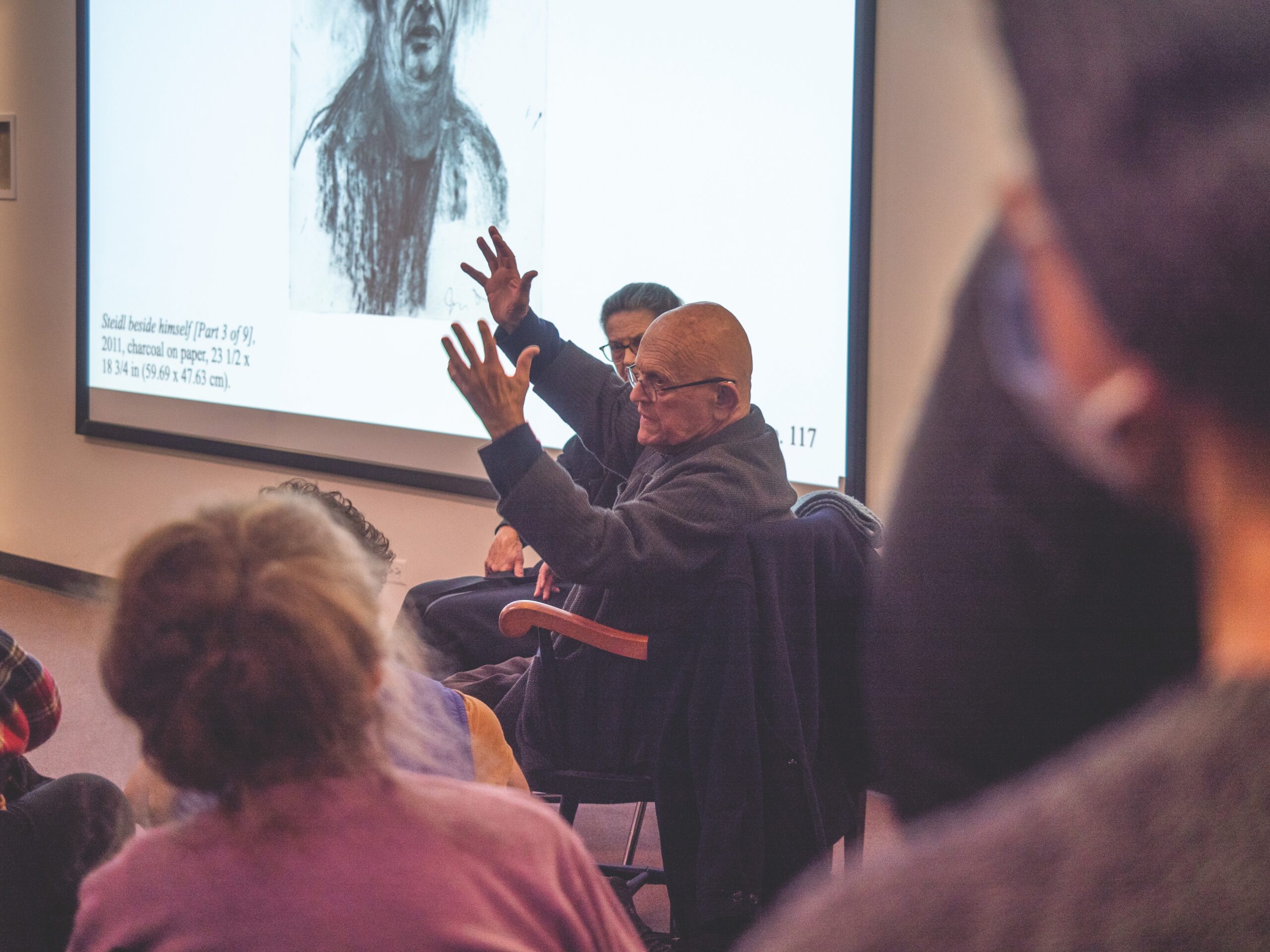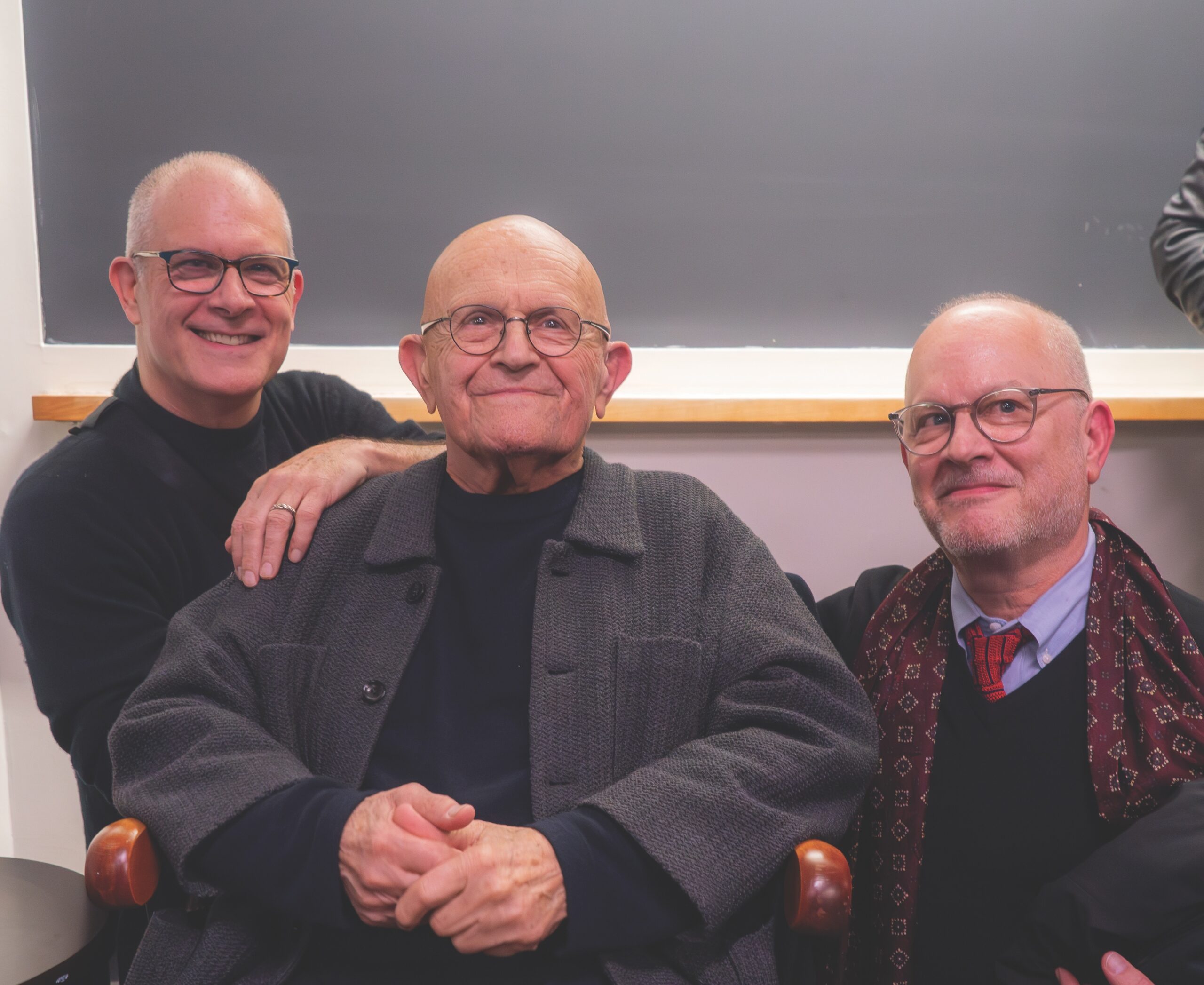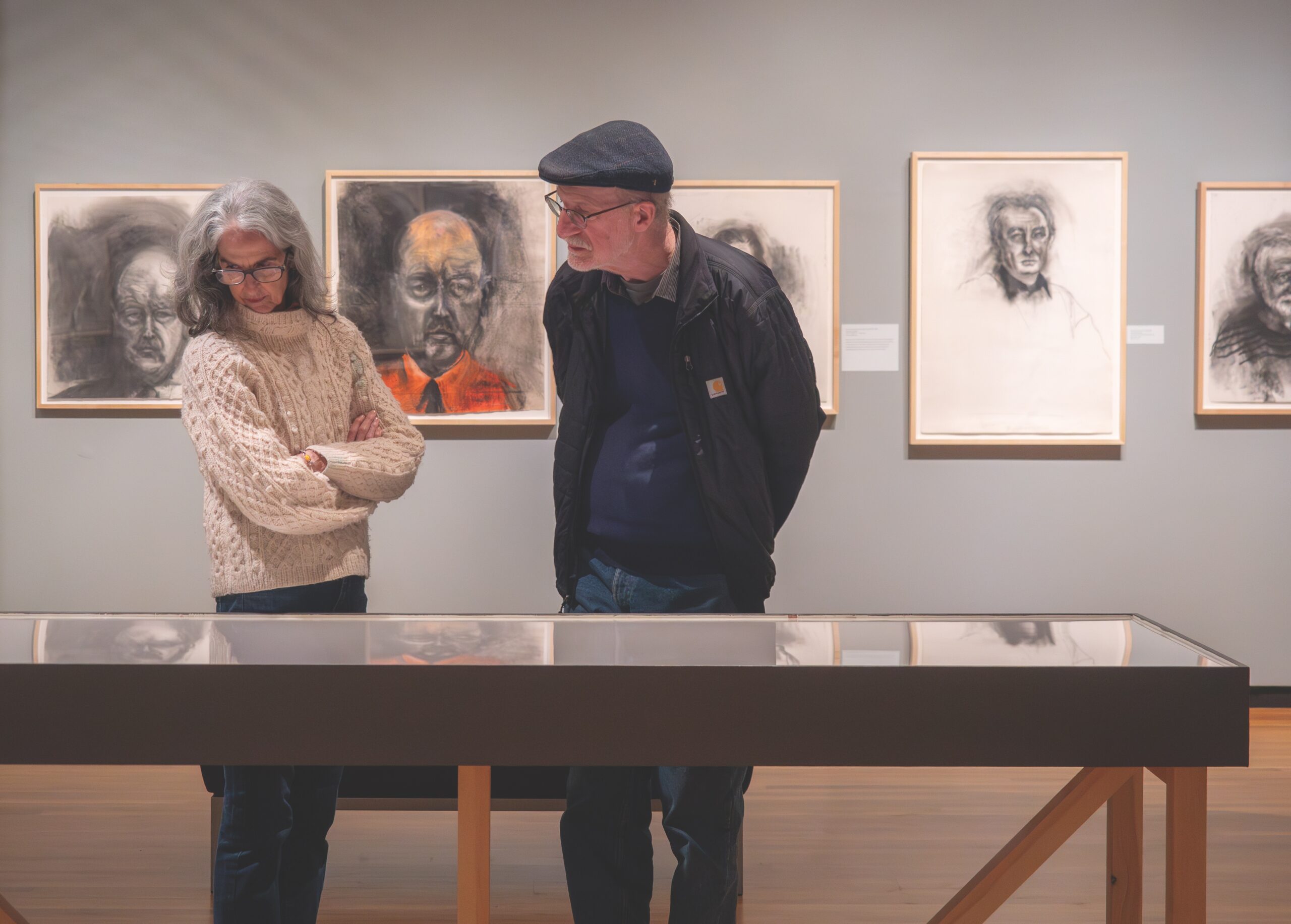Drawing portraits across and through time: Jim Dine’s “Forgotten Harvest”
March 1, 2024
 Alex Spear
Alex Spear“My interest in drawing is eternal,” Jim Dine said in a conversation with the Orient. “I could never have done anything with my work if I hadn’t drawn.”
Over the course of his decades-long career, Dine has dipped his toes into a genre-defying blend of art forms, including sculpture, painting and even poetry. The creative engine of his work, however, is drawing, a medium that is now the subject of a new solo exhibition of Dine’s portraiture at the Bowdoin College Museum of Art (BCMA): “Jim Dine: Last Year’s Forgotten Harvest.”
The show, curated by BCMA Co-Director Anne Collins Goodyear, features drawings spanning from 1957 up until this past year. Dine donated almost all of the “Forgotten Harvest” drawings to the museum’s permanent collection, while others were given by members of his family.
Born in Cincinnati, Dine studied art at Ohio University, where the exhibition’s oldest drawing, an untitled sketch of an anonymous model, was produced. After his career took off in the 1960s, art—in various forms—took him across the world, from Vienna and London to Putney, Vt. He now spends much of his time in Paris and on his farm in Walla Walla, Wash., but continues to travel and work full time.
“He’s 88 going on 18,” Goodyear said of Dine. “He has so much energy [and] he continues to have so much ambition.
Goodyear previously worked with Dine’s self-portraits in her former curatorial role at the Smithsonian’s National Portrait Gallery. She added that her personal connection with Dine began around a decade ago when a friend of Goodyear’s, the artist and curator Ruth Fine, suggested to Dine that he consider donating some of his work to the BCMA.
Last Friday, Dine visited campus for a discussion on his life and work as well as a reception celebrating the exhibition. A crowd of students and Dine enthusiasts filled the Visual Arts Center’s Beam Classroom, with attendees packed against the walls and into the stairwells outside to hear from the artist. Dine was joined in conversation by his wife, the photographer Diana Michener, who is featured repeatedly in the exhibition as a subject.
“I thought the best way to talk about my practice of drawing … would be to ask Diana,” Dine said. “It’s an interesting relationship between me and the sitter.”
Michener described sitting under Dine’s gaze as an intense—and at times, inaccessible—experience.
“[Dine’s] eyes are constantly on you, and you have no idea what’s behind them,” Michener said. “It’s exhilarating in some ways, but it’s a complex relationship to have.”
In an interview with the Orient, Goodyear called special attention to Dine’s use of drawing as a method of portraiture.
“The medium of drawing is something that [Dine] really associates, quintessentially, with the act of portrayal,” Goodyear said. “It’s not random that [the exhibition] is drawings. It’s not random that there are no paintings sprinkled in with this.”
Portrait artists, from Gilbert Stuart to Annie Leibovitz, tend to capture their subjects at a specific moment in time. Dine, on the other hand, uses the drawn portrait—particularly with his favorite instrument, charcoal—to intentionally represent the passage of time.
“I like looking at how the organism moves down—always down. Gravity is pulling the reins,” Dine said.
Many of the “Forgotten Harvest” drawings, like the artist’s 2023 self portrait, reflect Dine’s deeply physical depictions of time’s effect on the human body.
“I really want to record … the face and what it then becomes on the way down,” Dine said in the discussion. “It’s really exciting to invent from the pockets of flesh, how they move. The way the flesh leaves the skull is really exciting.”
Dine noted that he can put a drawing away only to take it out again for a new sitting years later. Many of the exhibition’s drawings were completed across multiple sittings, locations and years. The portraits often feature reworked lines and features, from the rough lines that characterize his drawings of Michener’s face to “The American Painter Susan Rothenberg,” where Dine drew Rothenberg’s right arm twice but left the first attempt in the sketch instead of erasing it.
“I like leaving my tracks,” Dine said. “In [“The American Painter Susan Rothenberg”], I thought those two hands were stronger than one.”
 Alex Spear
Alex SpearEyes are a frequent point of contention for Dine, who said in an interview that he often begins a portrait by using the subject’s eyes as a way of framing the head. Yet eyes in “Last Year’s Forgotten Harvest” are far from uniform. In a 1977 drawing of one of Dine’s sons, Matt, playing the oboe, the boy’s eyes are flashing, pointed forward. On the other hand, Goodyear noted that the Austrian art historian Barbara Wally’s eyes are almost completely scrubbed out in a 1995 sketch.
“There’s a very strong working of the eyes, and in some instances, that even leads to the paper being punctured,” Goodyear said.
For his part, Dine relishes his assault on the paper.
“I like to distress the paper. Sometimes if I get angry, I’ll put water on it, I’ll rub it with my hands, and then I try to bring it back and resuscitate it,” Dine said. “I feel like an alchemist, trying to make shit up.”
The creations featured in “Last Year’s Forgotten Harvest” are almost entirely in black and white, relying mostly on charcoal and pencil. In some drawings, Dine accentuates his work with pastel, ink, watercolor and other less commonly used materials.
“I think it’s almost cheating to use color,” Dine said during the discussion. “I use it sometimes to amuse myself to bring it up a little bit, or when I don’t know what to do.”
Rather than find variation in color, Dine prefers the intricacies of working with what he calls the “sensuous” medium of charcoal, which he can manipulate and move with his fingers after its application to the paper.
While Dine describes drawing as the “keystone” of his art, his repertoire expands across mediums and disciplines. Renowned as a painter and printmaker, he has also dabbled in sculpture, photography and poetry. “Jim Dine: Last Year’s Forgotten Harvest,” derives its verbiage from one of his own poems entitled “Last year’s forgiving heart.”
In his artist’s talk, Dine described how poetry was a more accessible literary medium for his dyslexia and explained that to him, the processes of drawing and writing poetry are remarkably similar.
“Because I’m an artist and used to drawing, I often start a poem by writing on the wall or putting sheets of paper—tacking them up from the ceiling down—and then go on a ladder and draw with charcoal or with ink.” Dine said. “It is very related to my method of drawing.”
Goodyear emphasized that the exhibition is the first Dine solo show to focus on portraits of subjects important in the artist’s personal life. Many exhibitions of Dine’s portraiture have focused on his self-portraits, and though “Last Year’s Forgotten Harvest” features just one, Goodyear said that she sees elements of autobiography in his depictions of French poet Arthur Rimbaud and of the prolific German self-portrait artist Max Beckmann.
 Alex Spear
Alex SpearThe exhibition is accompanied by a catalog printed by the German publisher Steidl, whose founder, Gerhard Steidl, is a prominent subject of the “Forgotten Harvest” drawings. The catalog is accompanied by an edited series of 2021 conversations between Dine and Goodyear in Paris. Dine is donating proceeds from the sale of the catalog and his other works to The Quill, Bowdoin’s oldest literary magazine.
Mei Bock ’24, the publication’s editor-in-chief, expressed thanks to Dine and said she hopes The Quill can put the money toward enhancing their spring issue.
“Hopefully, with this money, we’ll be able to do a larger run, maybe do a longer book,” Bock said. “It’s really exciting … also, symbolically, to feed on art supporting art.”
During the discussion, Dine commended Goodyear and the BCMA as caretakers of his work, hinting that the “Forgotten Harvest” drawings will not be his only donation to the museum.
“I think I will keep on giving Bowdoin drawings,” Dine said to a round of applause. “[“Last Year’s Forgotten Harvest”] is a little test. Since I’m pleased with the show, I’ll continue.”

Comments
Before submitting a comment, please review our comment policy. Some key points from the policy: